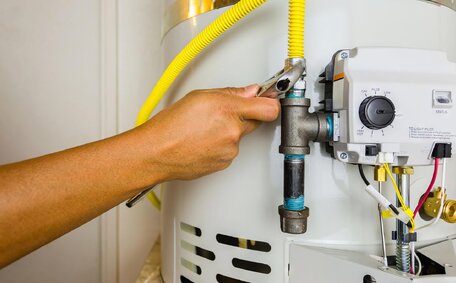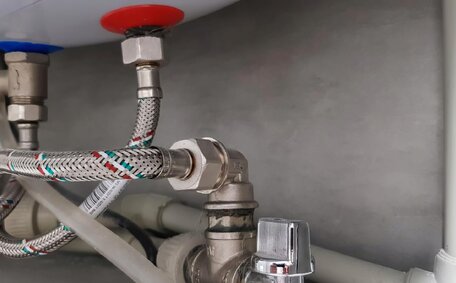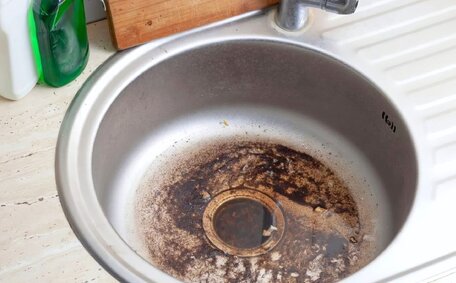Introduction to Tree Roots and Drain Damage
In Castle Hill, tree roots frequently cause drainage system damage by exploiting tiny cracks. As tree roots grow, they are drawn to the moisture and nutrients inside your sewer, prompting their infiltration into the roots sewer pipes. Over time, roots can exploit the smallest of cracks, with invasive tree roots winding their way into your sewer pipes, leading to significant blockages, leaks, and potential pipe breaks.
Older drainage systems, especially those made of ceramic or metal, are particularly vulnerable to tree roots that may damage your pipes. Equally problematic are small roots, which, despite beginning as fine hair-like strands, can amass over time, completely obstructing drains. Left unchecked, significant root intrusion will require major plumbing repairs and potentially complete drain replacement.
Proactive root interception halts their infiltration into sewer lines, representing a sensible strategy for Castle Hill homeowners to avert future plumbing issues. Early identification of drainage issues can make pipe repair simpler and avert costly emergencies caused by extensive tree root damage.
Signs that Tree Roots are Damaging Pipes
Several clear indicators, including slow drainage and frequent backups, signal that tree roots are infiltrating your plumbing and may damage your property’s drainage pipes in Castle Hill:
- Slow-draining sinks, showers, baths, or roots drain in your toilet
- Gurgling sounds coming from drains
- Distinct sewer gas odours that suggest tree root intrusions around your home
- Wet spots or lush vegetation thriving directly above sewer lines running through your Castle Hill property
- Low water pressure
- Backed up sewer lines
- Toilet overflows
- Burst or cracked pipes
- Frequent drain blockages
These complications often arise when tree roots intrude, as roots your drain pipes can lead to trapped debris and significantly hindered flow. Root masses can even crush roots your pipes from the inside. If you notice any of these signs blocked drains, it may be an indication of a drain seriously impacted by tree root intrusion.
It’s wise to call us as soon as issues arise and have a professional plumber inspect your sewer line for potential damage before roots exacerbate leaks, flooding, and complete pipe failures, prompting major home repairs.
Conventional Methods for Removing Tree Roots
To address tree root infiltration and damage in sewer pipes, the conventional method involves mechanically removing the tree roots. This involves physically cutting out the root mass with specialised power tools. High-pressure hot water jetting can be used to loosen roots, making them easier to remove from the drain and attempt to clear the system.
While cutting roots can used to provide temporary relief, the intricate branches of roots damaging your pipes are left intact, which allows for their continued proliferation. As roots re-enter drainage systems, blockages and pipe damage reoccur, requiring the removal process be repeated.
Recurring problems from tree roots in sewer pipes can lead to progressive damage. The tree roots will regrow, winding their way back into pipe infrastructure.
Chemical methods, like root killer, are also used to thwart tree roots threatening your sewer lines. However, these solutions rarely remove all roots, so the problem can recur, causing new blockages. The chemicals themselves can also harm the ecology of soil and groundwater close your home.
In Castle Hill, where maintaining property integrity is crucial, conventional root removal tactics may prove invasive and damaging to pipes beneath landscaped terrains. Severing a mature tree’s taproot through mechanical cutting near your pipes may destabilise or kill the tree as well.
Conventional root removal methods are often only temporarily effective and can repeatedly harm properties. There are better options available to eliminate tree root damage without causing repeated issues or property disturbance.
Pipe Relining for a Non-Invasive Solution
Pipe relining is a highly effective, minimally invasive technique to protect pipe systems from smaller roots and tree root intrusions in Castle Hill. This innovative trenchless method involves inserting a flexible epoxy resin tube, also called HDPE or high-density polyethylene lining, inside the damaged pipe to essentially create a ‘pipe within a pipe’.
The hardening tube forms a strong, watertight barrier that prevents further root invasion into your sewer. Pipe relining employs innovative techniques that address tree roots at their origin, displacing problematic growth and strengthening the pipes.
By avoiding excavation, pipe relining safeguards your landscaping, structures, and yard features against root intrusion. No driveways, your garden beds, or lawns need to be destroyed just to gain access to pipes buried underground. The process takes far less time as well, with most pipe relining jobs completed within a day.
Relined pipes have a smooth, joint-free interior that reduces blockages and prevents root reentry, significantly outperforming older pipes. Additional pipe lining benefits include improved water flow, fewer leaks, pipes prevent further corrosion or cracks, and enhanced structural stability.
Pipe relining is the top non-destructive method recommended by professional plumbers in Castle Hill to prevent root growth in pipes. Call us To learn more about this innovative approach for stopping tree root invasions.
Proactive Preventative Measures
Homeowners can take several proactive steps to protect their drainage systems from root damage and invasive growth:
- Strategically planning where to plant new trees, opting for species with non-intrusive root systems like birches, magnolias, and fruit trees, well removed from sewer lines is vital.
- Installing root barriers, such as foam sleeves around pipes, can deter destructive root growth and prevent encroachment.
- Consult an arborist for advice on managing the trees on your property, ensuring those growing don’t impact your plumbing system.
- Conduct regular drain inspections to help prevent potential root issues from escalating.
- Consider preventative pipe relining to reinforce pipes against future root damage.
Taking proactive measures to block roots from your pipes will reduce the risk of blocked drains, sewer leaks, flooding, and water damage. Contact the Castle Hill plumbing experts to learn about options to keep your drains and sewer lines clear of root invasions for good.
Why Regular Plumbing Inspections Matter
Regular plumbing system inspections are vital for Castle Hill homeowners to protect your sewer, especially for those with mature trees or ageing pipe infrastructure prone to tree root damage. Our professional plumbers employ a drain camera for CCTV inspections to proactively identify any invading tree roots before they severely compromise your pipes.
Early detection can prevent tree root intrusion into the sewer system and permit cost-effective relining, avoiding costly emergency pipe repairs.
For example, if an inspection reveals roots growing into your sewer drain line, the issue can be resolved right away with pipe relining before roots amass and fully clog the drain.
Avoid waiting for sewage backflow or a pipe burst beneath your driveway; take preventive action now. Schedule regular plumbing inspections with Castle Hill Plumbing instead and take advantage of pipe relining to defend against root damage before catastrophe strikes. Contact us today to book your pipe assessment.
Pipe Relining vs Traditional Pipe Replacement
When it comes to addressing tree roots your sewer damage in drainage pipes, homeowners in Castle Hill have two main options: traditional pipe replacement or trenchless pipe relining. Despite drain pipe section replacement being a traditional go-to, relining offers similar repairs with the benefit of not damaging your property.
Pipe Replacement Downsides
To replace old pipes hindered by the need to remove trees, excavators must dig large trenches to access and remove damaged sections, then install new pipe segments. This extremely disruptive process requires tearing up driveways, landscaping, and other yard structures. Not only does replacement carry a hefty upfront expense but also brings about additional costs as you end up restoring areas damaged during the installation.
The process can also be quite lengthened, potentially taking weeks before restoration prevents trouble from a root infestation taking hold and pushing its way into your property. Lastly, joints between new pipe sections can provide gateways for roots entering and future root regrowth. Finding an effective way deal with these repeated issues without resorting to the damaging replacement process is essential.
Why Pipe Relining is Superior
Pipe relining methods that can stop roots from penetrating can keep intrusive growths out of your drain pipes, showcasing an edge over traditional replacement strategies:
- Avoids property destruction through trenchless installation.
- Restores pipes from the inside so no excavation is needed.
- Lining bonds to existing pipes to prevent future root regrowth.
- Lasting repairs with little risk of reoccurring issues.
- With project completion in a day, pipe relining provides a swift resolution to your concerns about disruptions.
- Pipe relining can be up to 60% more cost-effective than full pipe replacement.
For long-term tree root solutions without demolishing your yard or home, pipe relining is the clear choice recommended by Castle Hill’s top plumbers—don’t hesitate to call us. Contact us to learn more about this innovative repair method for keeping tree roots out of your pipes.
FAQs on Tree Roots and Plumbing Issues
Why do tree roots damage pipes?
Tree roots naturally seek moisture and nutrients, leading them into pipes. Over time, these roots wind their way inside the pipes through cracks and joints. Once inside pipes, expanding roots can cause significant blockages, ruptures, and leaks.
What pipe materials are vulnerable to tree roots?
Older drains made from clay, steel, copper, and concrete are especially vulnerable and should be monitored more closely for cracks that tree roots can exploit. Newer PVC pipes offer better resistance to tree root infiltration compared to older materials.
How can I tell if tree roots are blocking my drain?
Warning signs tree root invasion include backed-up sinks/toilets, sewage odours, wet spots in the yard, drain gurgling, and slow drainage. CCTV camera inspections can clearly reveal any roots within your drain pipes.
Will pipe relining permanently stop roots?
Yes, epoxy-resin pipe lining seals out moisture and nutrients to prevent tree roots from intruding your pipes. It offers a durable defense, inhibiting tree root expansion and preventing their entry into your pipes.
Why not just remove the trees near my pipes?
Removing large trees can disrupt your landscape and potentially compromise underground pipes. It’s better to deploy a root barrier strategy like pipe relining which avoids harming trees or landscaping.
How long does pipe relining take to install?
Most pipe lining projects are completed within a single day, minimising disruption and mess on your property. It’s far less disruptive than replacing pipes over weeks.






